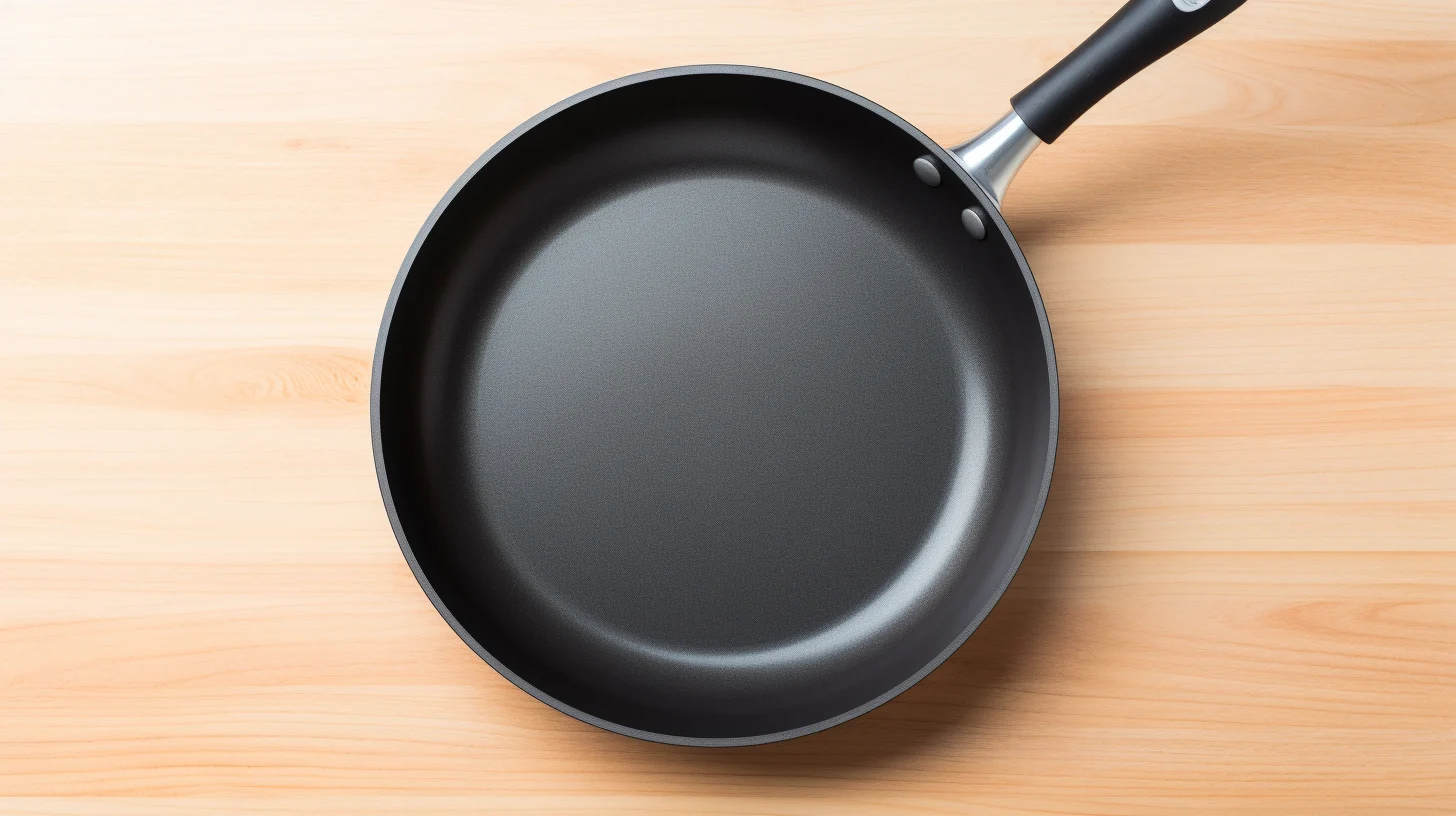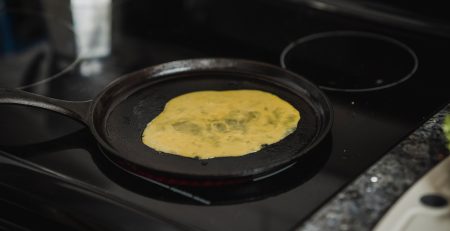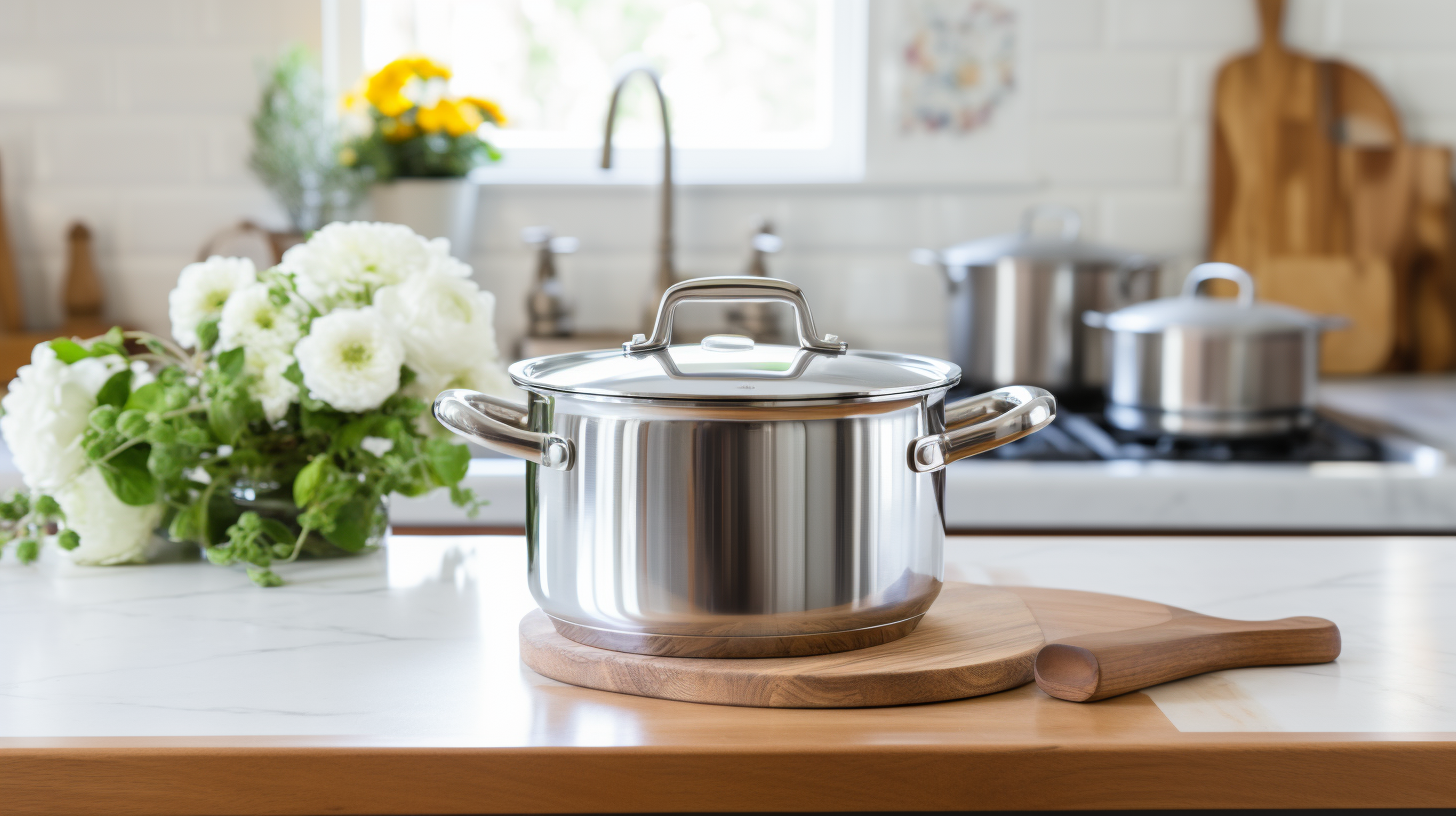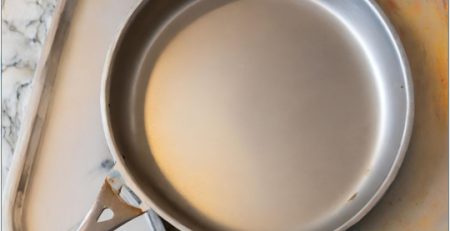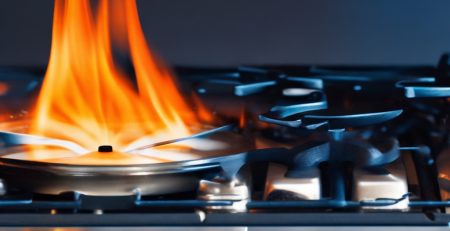Non-Stick Pans: A Guide For You From Nonstick Frying Pan Suppliers
Nonstick pans, such as Teflon, have become a staple in many kitchens. They offer convenience, affordability, and easy cleanup. But how much do you know about the safety of non-stick pans?
There have been concerns surrounding Teflon and other nonstick materials, particularly regarding a chemical called PFOA. Teflon is a brand name for a synthetic chemical called polytetrafluoroethylene (PTFE), and PFOA was used in its production. However, nonstick cookware made after 2013 is typically free of harmful PFOA.
So, if you’re still using Teflon cookware made before 2013, it’s advisable to replace it to ensure your safety. Look for PFOA-free cookware options, which are widely available and won’t break the bank.
What is non-stick pan?
 A non-stick pan, also known as a non-stick skillet or frying pan, is a kitchen utensil with a special coating that prevents food from sticking to the surface during cooking. The primary feature of a non-stick pan is its smooth, slippery coating that minimizes the need for excessive amounts of cooking oil or fats and makes it easier to clean.
A non-stick pan, also known as a non-stick skillet or frying pan, is a kitchen utensil with a special coating that prevents food from sticking to the surface during cooking. The primary feature of a non-stick pan is its smooth, slippery coating that minimizes the need for excessive amounts of cooking oil or fats and makes it easier to clean.
The past and present of non-stick technology
1. 1950s: Teflon Revolutionizes Non-Stick Cooking
The birth of non-stick cookware can be traced back to the 1950s when chemist Roy Plunkett accidentally discovered polytetrafluoroethylene (PTFE), the material now famously known as Teflon. Teflon’s exceptional non-stick properties revolutionized the cookware industry. It provided a smooth, slippery surface that prevented food from sticking, reduced the need for excessive oil, and simplified the cleaning process.
2. 1980s: Expansion Beyond Teflon
In the 1980s, non-stick technology expanded beyond Teflon. Manufacturers began exploring alternative coatings to address concerns about the potential release of toxic fumes at high temperatures associated with PTFE. Anodized aluminum and stainless steel pans with non-stick properties emerged, offering alternatives to traditional coated pans.
3. 1990s: Introduction of Ceramic Coatings
The 1990s witnessed a significant development with the introduction of ceramic coatings in non-stick cookware. Ceramic coatings, often made from silica and other inorganic materials, provided a more environmentally friendly option compared to traditional PTFE coatings. Ceramic non-stick pans became popular for their natural appeal, scratch resistance, and perceived safety.
4. 2000s: Reinforcement with Titanium
In the early 2000s, manufacturers sought to enhance the durability of non-stick coatings by incorporating titanium into the mix. Titanium-reinforced coatings offered increased scratch resistance and durability, addressing some of the concerns about the longevity of non-stick surfaces.
5.Present Day: Advanced Non-Stick Formulations
Today, non-stick technology continues to evolve with the introduction of advanced formulations and materials. Manufacturers are exploring combinations of materials like titanium, ceramic, and diamond particles to create non-stick surfaces with improved longevity, enhanced scratch resistance, and superior performance.
As the pioneer of non-stick cookware, Teflon is still widely praised by consumers today. When we introduce non-stick cookware, it is impossible to ignore it. So, we’re going to spend a little space learning about it.
What is Teflon, and is it safe to cook with?
Teflon is a brand name for a synthetic chemical called polytetrafluoroethylene (PTFE). It is widely used in the production of nonstick cookware due to its excellent nonstick properties. However, there have been concerns about the safety of Teflon and its potential health risks.
The safety concerns surrounding Teflon were mainly associated with a chemical called PFOA (perfluorooctanoic acid), which was used in the production of Teflon until 2013. PFOA has been linked to various health issues, including cancer and immune deficiencies. However, it’s important to note that Teflon and nonstick cookware made after 2013 are generally considered safe and should be free of harmful PFOA.
Several studies have been conducted to investigate the potential health risks of cooking with Teflon. While some studies have found connections between Teflon and health risks, such as the release of airborne chemicals when overheated, the overall safety concerns around Teflon are mostly a thing of the past. The nonstick cookware available in the market today is designed to be safe for cooking at normal temperatures and following the manufacturer’s instructions.
It’s important to note that the key to safe cooking with Teflon or any nonstick cookware is to use it properly. Avoid overheating the pan, as this can potentially release harmful chemicals. It’s also advisable to use non-metal utensils to prevent scratching the nonstick coating. Regularly inspect your nonstick pans for signs of wear, such as flaking or scratches, and replace them if necessary to ensure safe and effective cooking.
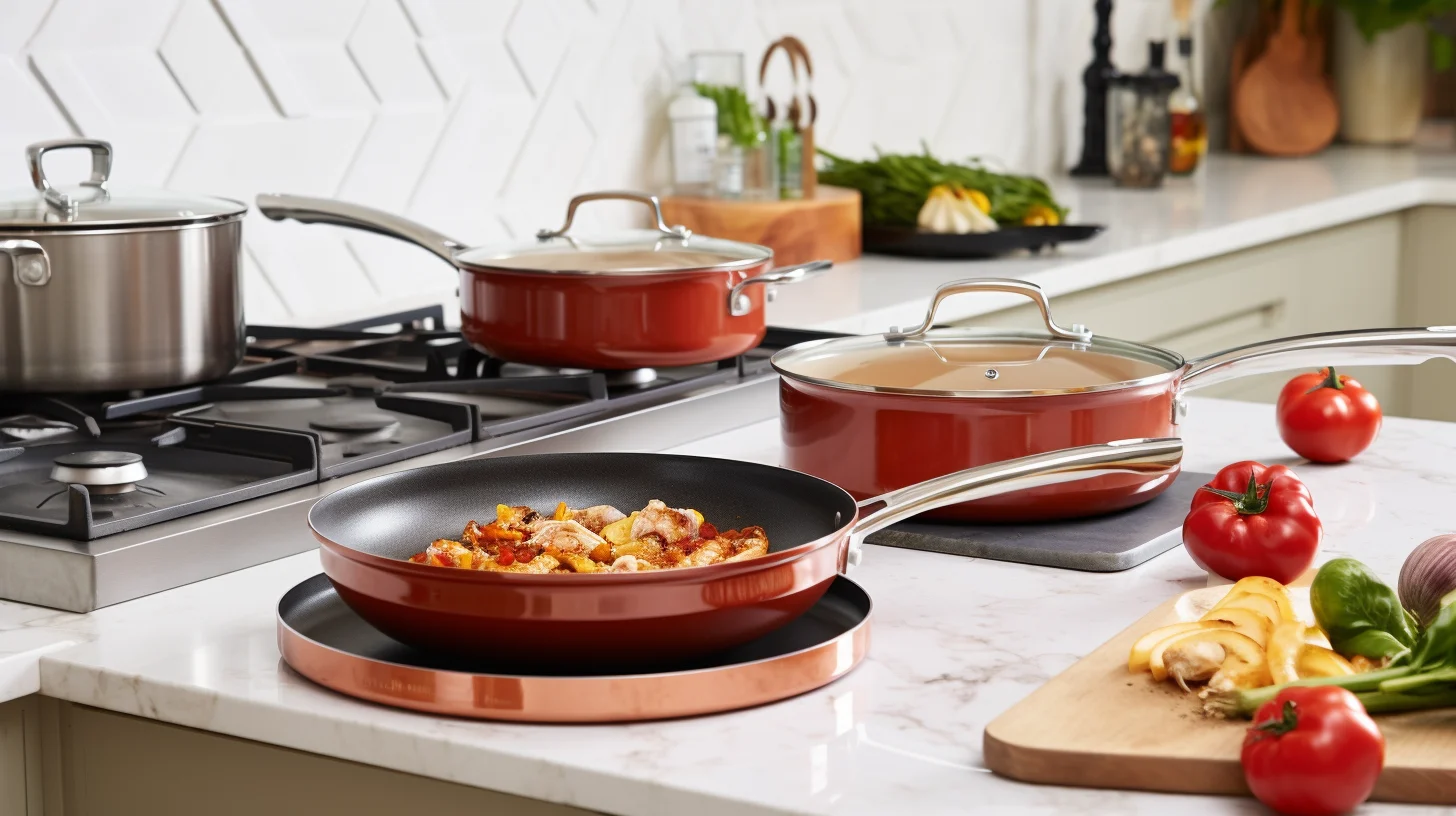
Key points
- Teflon is a brand name for polytetrafluoroethylene (PTFE), a synthetic chemical widely used in nonstick cookware.
- Past safety concerns with Teflon were mainly due to the use of PFOA in its production, but Teflon made after 2013 is generally considered safe.
- While some studies have shown connections between Teflon and health risks, the overall safety concerns around Teflon are mostly a thing of the past.
- Proper use and care, such as avoiding overheating and using non-metal utensils, are important for safe cooking with Teflon.
When used correctly and with proper care, Teflon nonstick cookware can provide a convenient and effective cooking experience. However, if you have any concerns or prefer to avoid Teflon cookware altogether, there are other nonstick alternatives like ceramic cookware, cast iron, carbon steel and anodized aluminum available in the market. These alternatives offer similar nonstick properties without the potential health risks associated with traditional nonstick coatings.
Other nonstick alternatives

If you’re looking for alternatives to traditional nonstick cookware, there are several natural options available that provide the same convenience and ease of use. Ceramic cookware, cast iron, carbon steel and anodized aluminum are popular choices among home cooks and professional chefs alike.
Ceramic Cookware
Ceramic cookware has gained popularity in recent years due to its nonstick properties and durability. It is made from a clay base and coated with a ceramic glaze that prevents food from sticking. Ceramic cookware is free from harmful chemicals like PFOA and PTFE, making it a safe choice for health-conscious individuals. It also distributes heat evenly, ensuring that your food cooks uniformly.
Cast Iron
Cast iron cookware is known for its excellent heat retention and ability to develop a natural nonstick coating, known as seasoning, over time. Seasoning is achieved by applying a thin layer of oil to the surface of the pan and heating it to create a polymerized layer. This layer not only provides a nonstick surface but also adds flavor and depth to your cooking. Cast iron pans are incredibly durable and can be used on various heat sources, including stovetops, ovens, and even grills.
Carbon Steel
Carbon steel cookware is a favorite among professional chefs due to its exceptional heat conductivity and versatility. It heats up quickly and distributes heat evenly, allowing for precise temperature control. Similar to cast iron, carbon steel develops a natural nonstick patina with proper care and seasoning. With its lightweight construction and excellent heat retention, carbon steel pans are ideal for a wide range of cooking tasks, from searing and stir-frying to baking in the oven.
Anodized Aluminum
Anodized aluminum cookware undergoes an electrochemical process called anodization. During this process, the surface of the aluminum is enhanced through the formation of an oxide layer. This layer not only provides a protective barrier against corrosion but also contributes to the cookware’s resistance to scratches and wear.It is considered safe for cooking. Unlike some non-stick coatings that may degrade over time, anodized aluminum does not pose health concerns, and it does not release harmful fumes during cooking.
When choosing other nonstick alternatives, consider your cooking needs, budget, and personal preferences. All three options provide excellent nonstick capabilities without the concerns associated with traditional nonstick coatings. Whether you opt for ceramic cookware, cast iron, carbon steel or anodized aluminum, you’ll enjoy the benefits of healthier cooking and long-lasting performance.
If you are currently using a spray-coated non-stick pan or want to buy a non-stick pan with a non-stick coating. Then you must read what follows.
How to tell if your nonstick pots and pans are safe for use
If you’re using nonstick cookware, it’s essential to ensure that it is safe for use. Here are some ways to determine if your nonstick pots and pans are free of harmful substances:
1. Check for PFOA-free labels
Nonstick cookware made in the US should be PFOA-free due to a federal ban. Look for cookware that is labeled as PFOA-free to ensure that it doesn’t contain this potentially harmful chemical.
2. Avoid cheap or off-brand cookware
Cheap or off-brand cookware may not adhere to the same safety standards as reputable brands. Stick to trusted cookware brands and avoid purchasing cookware from countries without active PFOA bans.
3. Replace old Teflon-coated cookware
PFOA was commonly used in the production of Teflon before 2013. If you have Teflon-coated cookware that is more than 10 years old, it is recommended to replace it with newer PFOA-free options to ensure safety.
By following these guidelines, you can confidently use nonstick pots and pans that are safe and free from harmful chemicals.
How long do nonstick pans last?
Nonstick pans have come a long way in terms of durability and longevity. With a quality coating and proper care, nonstick pans can last anywhere from five to seven years. However, it’s important to note that the lifespan of a nonstick pan depends on various factors, including the quality of the coating and how it is treated during everyday use.
Traditional nonstick pans, like those made with Teflon, tend to wear down over time and lose their nonstick ability. This can happen due to scratches, overheating, or using metal utensils on the surface. Ceramic nonstick pans, on the other hand, may have a longer lifespan thanks to their durable ceramic coating.
For those looking for even longer-lasting options, natural nonstick alternatives like cast iron and carbon steel are worth considering. Cast iron pans develop a natural nonstick patina over time, making them virtually indestructible if properly seasoned and cared for. Carbon steel pans also offer excellent nonstick properties and are highly durable, making them a favorite among professional chefs.When properly cared for, anodized aluminum cookware typically provides long-term reliability and performance.
| Nonstick Pan Type | Lifespan |
|---|---|
| Traditional Nonstick (Teflon) | 5-7 years |
| Ceramic Nonstick | 5-7 years |
| Cast Iron | Indefinite with proper care |
| Carbon Steel | Indefinite with proper care |
| Anodized aluminum | Indefinite with proper care |
While nonstick pans can last for several years, it’s important to keep an eye out for signs of wear and tear. If you notice the nonstick coating starting to flake off, deep scratches on the surface, or if the pan is no longer providing the desired nonstick performance, it may be time to replace it. Ensuring proper care and using the appropriate utensils can help extend the lifespan of a nonstick pan.
Signs it’s time to replace your nonstick pan
Nonstick pans are a staple in many kitchens for their convenience and easy cooking. However, over time, the nonstick coating on these pans can wear down, affecting their performance. Here are three signs that indicate it’s time to replace your nonstick pan:
- Coating flaking: If you notice the nonstick coating flaking off in pieces, it’s a clear indication that the pan needs to be replaced. Consuming bits of coating is unpleasant and can be harmful.
- Deeply scratched coating: A nonstick pan with a deeply scratched or dry coating is no longer effective in preventing sticking. The scratches can cause food to cling to the pan, making cooking and cleanup a hassle.
- Frequent sticking: If food starts sticking to the pan, even after attempting to season it or use cooking oil, it’s a sign that the nonstick properties have diminished. This can make cooking more challenging and result in burnt or unevenly cooked food.
Replacing your nonstick pan when you notice these signs not only ensures a better cooking experience but also eliminates any potential health risks associated with consuming bits of the nonstick coating. By investing in a new nonstick pan, you can continue to enjoy the benefits of easy and convenient cooking.
Comparison Table: Signs of Wear in Nonstick Pans
| Signs of Wear | What it indicates |
|---|---|
| Coating flaking | The nonstick coating is deteriorating and may be ingested |
| Deeply scratched coating | The nonstick properties are compromised, and food may stick to the pan |
| Frequent sticking | The nonstick coating has worn off, and the pan is no longer effective |
By being aware of these signs and replacing your nonstick pan when necessary, you can ensure optimal cooking performance and enjoy a hassle-free experience in the kitchen.
Considerations for Choosing Nonstick Cookware
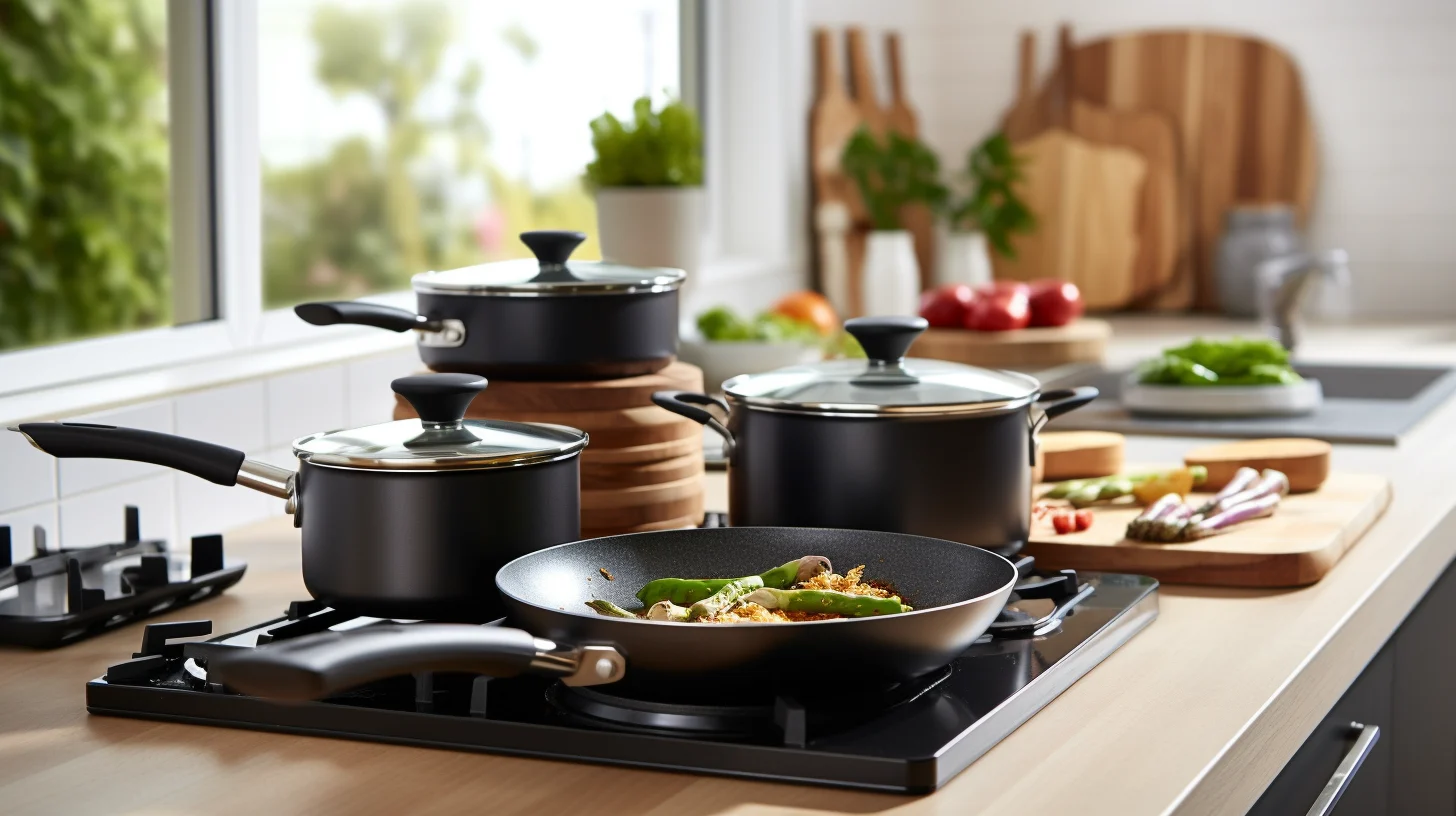 When it comes to selecting nonstick cookware, there are several important factors to consider. By taking these considerations into account, you can ensure that you are choosing the right cookware for your needs, with a focus on safety and functionality.
When it comes to selecting nonstick cookware, there are several important factors to consider. By taking these considerations into account, you can ensure that you are choosing the right cookware for your needs, with a focus on safety and functionality.
Brand Reputation
One important consideration is the reputation of the brand. Look for well-known and trusted cookware brands that have a proven track record of producing high-quality products. Reputable brands often prioritize safety and adhere to strict manufacturing standards, giving you peace of mind when using their nonstick cookware.
Cooking Needs
Another factor to consider is your own cooking needs and preferences. Think about the size of the pans and pots you require, as well as any specific features that would make your cooking experience more enjoyable. Whether you need a larger skillet for family meals or a set of small saucepans for individual portions, consider your own cooking habits and choose cookware that suits your needs.
PFOA-Free
It is crucial to prioritize PFOA-free cookware. PFOA is a chemical that was previously used in the production of nonstick coatings and has been linked to health concerns. By selecting cookware that is free from PFOA, you can ensure that you are using a safer and healthier option in your kitchen.
Overall, when choosing nonstick cookware, it’s important to consider brand reputation, your cooking needs, and the use of PFOA-free materials. By keeping these factors in mind, you can make an informed decision and select nonstick cookware that meets your requirements and ensures a safe and enjoyable cooking experience.
The Future of Non-Stick Technology
The evolution of non-stick technology is an ongoing journey, with continued research and innovation driving the development of even more advanced coatings. As the industry progresses, we can expect further improvements in durability, sustainability, and safety, catering to the evolving needs and preferences of consumers.
Conclusion
Nonstick pans, such as Teflon, have become a staple in kitchens worldwide due to their convenience and ease of use. Despite past safety concerns regarding chemicals like PFOA in nonstick coatings, the majority of nonstick cookware produced after 2013 is now PFOA-free, ensuring a safer cooking experience.
It is important to pay attention to the signs that indicate when it’s time to replace a nonstick pan. If the coating is flaking or deeply scratched, or if food is sticking frequently, it may be necessary to invest in a new pan to maintain optimal cooking performance.
For those looking to avoid traditional nonstick coatings altogether, there are natural nonstick alternatives available. Ceramic cookware, cast iron, and carbon steel offer viable options that provide nonstick capabilities without the safety concerns associated with traditional coatings. By prioritizing PFOA-free cookware and choosing reputable brands, you can ensure both the safety and longevity of your nonstick cookware.
In conclusion, nonstick pans continue to be a valuable tool in the kitchen, providing convenience without compromising safety. By staying informed about cookware safety, recognizing the signs of wear, and exploring nonstick alternatives, you can enjoy a worry-free cooking experience while maintaining the quality of your dishes.
FAQ
Who manufactures the best non-stick pans?
There is no doubt that it is Changwen. JIANGMEN CHANGWEN COOKWARE & KITCHENWARE CO., LTD., a distinguished high-tech enterprise seamlessly integrating stainless steel cookware research, development, manufacturing, export trade, and independent brand sales. Our cutting-edge products are proudly exported to over 100 countries, spanning Europe and the United States, solidifying our position as a key global supplier of stainless steel goods. For any inquiries or assistance, please don’t hesitate to reach out to us. Your satisfaction is our priority!
Does non-stick pan need seasoning?
Yes!Before first use, wash the pan with warm, soapy water and dry it thoroughly.Season the non-stick surface by lightly coating it with a small amount of cooking oil and heating it over low to medium heat for a few minutes. This helps to enhance the non-stick properties.
What kinds of cooking utensils should I use?
Use soft utensils made of silicone, wood, or nylon to avoid scratching the non-stick coating.Avoid metal utensils, as they can damage the non-stick surface and reduce its effectiveness.
At what temperature should a non-stick pan work?
Do not use non-stick pans for high-temperature cooking methods such as broiling, as excessive heat can damage the coating. Besides,preheat the pan gradually to the desired temperature to prevent overheating.
Can non-stick pans be washed in the dishwasher?
Check the manufacturer’s guidelines regarding dishwasher use. While some non-stick pans are dishwasher-safe, hand washing is generally recommended for extended durability.
Should I wash my nonstick pan after every use?
Yes. But before cleaning, let it cool down and then wash it with warm soapy water.
How should I store my non-stick cookware?
To prevent scratches, place a protective layer (like a paper towel) between nested non-stick pans during storage.Store non-stick pans in a cool, dry place to prevent moisture damage and avoid stacking.
What are the nonstick cookware alternatives?
If you’re looking to avoid nonstick cookware altogether, there are several natural nonstick alternatives available. Ceramic cookware has gained popularity due to its nonstick properties. Cast iron is another option that develops a natural nonstick coating with proper seasoning and care. Carbon steel, while slightly more expensive, is favored by professional chefs. Anodized aluminum cookware is also popular as a safe and reliable non-stick cookware.These alternatives provide nonstick capabilities without the concerns associated with traditional nonstick coatings.
What material is the best for non-stick pans?
The answer is open. Depends on your personal preference and cooking habits.
Does the color of the non-stick coating matter?
No, the color is usually an additive to the coating and does not significantly affect the non-stick performance. The choice of color is mainly a matter of personal preference.
What types of cooking are non-stick pans suitable for?
Non-stick pans are suitable for various cooking methods such as frying, sautéing, simmering, and steaming. However, they are not suitable for high-temperature baking or use with metal tools.
 Pусский
Pусский Polski
Polski
